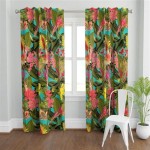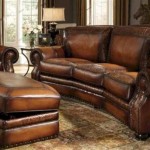Living Room Wall-to-Wall Carpet: A Comprehensive Guide
Wall-to-wall carpet in the living room presents a significant flooring choice, impacting the room's aesthetics, comfort, and overall functionality. This type of carpeting covers the entire floor space, edge to edge, offering a seamless and unified appearance. A thorough understanding of the various aspects involved in selecting, installing, and maintaining wall-to-wall carpet is crucial for homeowners seeking to enhance their living room environment.
The decision to install wall-to-wall carpet involves considering various factors, including the type of carpet fiber, the desired level of foot traffic resistance, the existing décor of the living room, and the budget allocated for the project. A poorly chosen carpet can detract from the room's aesthetic appeal and require frequent replacement, while a well-selected and properly maintained carpet can provide years of comfort and visual appeal.
Understanding Carpet Fiber Types
The type of fiber used in the construction of wall-to-wall carpet significantly affects its durability, stain resistance, and overall feel. The most common carpet fibers include nylon, polyester, olefin (polypropylene), wool, and triexta. Each fiber type possesses distinct characteristics that make it suitable for different applications and lifestyles.
Nylon is renowned for its exceptional durability and resilience, making it an excellent choice for high-traffic areas like living rooms. It is also resistant to staining and crushing, maintaining its appearance for an extended period. Nylon carpets can be treated to further enhance their stain resistance, making them a practical option for households with children and pets. However, nylon tends to be more expensive than other synthetic fibers.
Polyester carpets are known for their softness and vibrant color options. They are also naturally stain-resistant and relatively affordable compared to nylon. However, polyester is less resilient than nylon and may flatten more easily in high-traffic areas. It's a good option for living rooms that don't see extremely heavy use and where a soft feel is prioritized.
Olefin, also known as polypropylene, is a synthetic fiber that is highly resistant to stains, moisture, and fading. It is often used in Berber carpets and loop pile constructions. Olefin is a budget-friendly option but is less durable than nylon or polyester and can be prone to crushing. While its moisture resistance makes it suitable for basements or areas prone to dampness, its lower durability limits its suitability for high-traffic living rooms.
Wool is a natural fiber prized for its luxurious feel, inherent stain resistance, and durability. Wool carpets are often considered the gold standard, offering excellent comfort and a sophisticated appearance. Wool is also naturally flame-retardant. However, wool carpets are significantly more expensive than synthetic alternatives and require specialized cleaning to prevent damage and shrinkage. They are a worthwhile investment for homeowners seeking a high-end, durable, and aesthetically pleasing carpet.
Triexta is a relatively new synthetic fiber that combines the best qualities of polyester and nylon. It is exceptionally stain-resistant, durable, and soft underfoot. Triexta carpets are also environmentally friendly, as they are partially made from renewable resources. While triexta is becoming increasingly popular, it may be more expensive than polyester but offers superior performance in terms of durability and stain resistance.
Choosing the Right Carpet Pile
The pile of a carpet refers to the density and construction of the fibers on the carpet's surface. Different pile types offer varying levels of comfort, durability, and aesthetic appeal. Common carpet pile types include cut pile, loop pile, and cut-and-loop pile.
Cut pile carpets have fibers that are cut at the top, creating a soft and plush surface. There are several variations of cut pile, including plush, Saxony, frieze, and cable. Plush carpets have a smooth, even surface and a luxurious feel. Saxony carpets have a denser pile that is more resistant to crushing. Frieze carpets have a highly twisted pile that creates a textured and casual look. Cable carpets have thick, bulky fibers that offer a comfortable and informal feel. Cut pile carpets are generally comfortable underfoot but may show footprints and vacuum marks more easily than loop pile carpets.
Loop pile carpets have fibers that are looped and uncut on the surface. They are known for their durability and resistance to crushing. Berber carpets are a common type of loop pile, characterized by their tightly looped and often multi-colored construction. Loop pile carpets are a practical choice for high-traffic areas, as they conceal dirt and resist wear and tear. However, they may not be as soft or plush as cut pile carpets.
Cut-and-loop pile carpets combine both cut and loop fibers to create a patterned or textured surface. This type of carpet offers a balance of comfort and durability. The cut fibers provide a soft feel, while the loop fibers add texture and resilience. Cut-and-loop pile carpets can be used to create a variety of designs and patterns, adding visual interest to the living room.
The appropriate pile height also plays a key role. A higher pile height will usually mean a plusher, softer surface. A lower pile height will typically be more durable and easier to clean. The ideal pile height will depend on the needs and aesthetic goals of the homeowner.
Considerations for Installation and Maintenance
Proper installation is crucial for the longevity and performance of wall-to-wall carpet. Professional installation ensures that the carpet is stretched and secured correctly, preventing wrinkles, buckling, and premature wear. Before installation, the subfloor must be clean, level, and free of moisture.
The installation process typically involves laying a carpet pad over the subfloor, which provides cushioning, insulation, and noise reduction. The carpet is then stretched over the pad and secured to tack strips around the perimeter of the room. Seams are carefully joined to create a seamless appearance. Accurate measurements are crucial to minimize waste and ensure a proper fit. Professional installers have the tools and expertise to handle complex installations, including those with stairs, angled walls, or custom shapes.
Regular maintenance is essential for keeping wall-to-wall carpet clean and looking its best. Vacuuming at least twice a week is recommended to remove dirt, dust, and debris. High-traffic areas may require more frequent vacuuming. Spot cleaning spills immediately is crucial to prevent staining. Use a mild detergent and blot the stain gently, avoiding rubbing, which can damage the carpet fibers.
Professional carpet cleaning should be performed every 12 to 18 months to remove embedded dirt and allergens. Hot water extraction, also known as steam cleaning, is a common method for deep cleaning carpets. Dry cleaning methods may also be used, particularly for delicate or wool carpets. Proper ventilation is essential during and after cleaning to prevent mold and mildew growth.
Furthermore, it is beneficial to use mats at entryways to trap dirt and moisture before it enters the living room. Rotating furniture can help to distribute wear evenly across the carpet. Avoiding abrasive cleaners and harsh chemicals will help to prolong the life of the carpet and maintain its appearance. Regular inspections for signs of damage, such as loose seams or frayed edges, can allow for timely repairs and prevent further deterioration.
Choosing the right underlayment is also an important aspect of carpet selection and installation. A good underlayment provides cushioning, improves insulation, and extends the life of the carpet. Different types of underlayment are available, including foam, rubber, and felt. The appropriate type of underlayment will depend on the type of carpet, the subfloor, and the desired level of comfort and performance.
Finally, the decision of purchasing wall-to-wall carpet should align with the homeowner's awareness of the carpet's potential environmental impact. Sustainable carpet options are available, including carpets made from recycled materials and low-VOC (volatile organic compound) adhesives. Choosing environmentally friendly materials can help to reduce the carbon footprint of the home and improve indoor air quality.

Wall To Carpet Area Rug Trends One Floor Home

The Wall To Carpet Guide Everything You Need Know

Wall To Carpet Area Rug Trends One Floor Home

Wall To Carpets All You Need Know Answered Tsar

11 Reasons To Love Wall Carpeting Again

Wall To Carpet Installation Why It Matters For Your Home

Why You Should Consider Wall To Carpeting

Elevated Style For Your Wall To Carpet

Designing With Carpet Couristan

Factors To Consider Before Choosing Wall Carpeting Canadian Home Style








